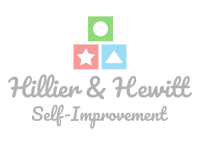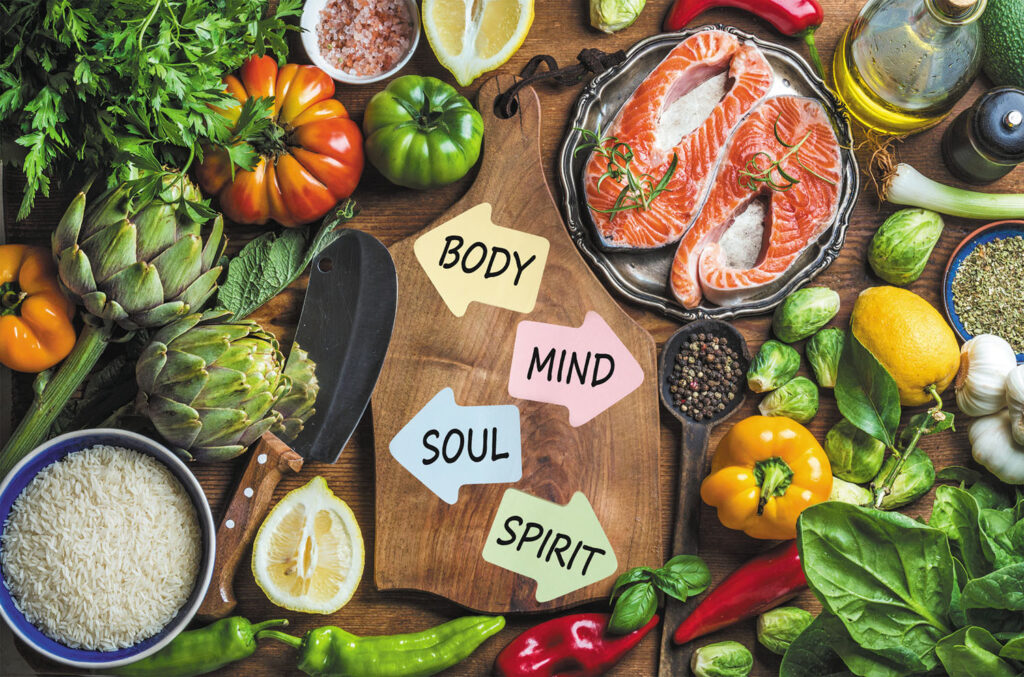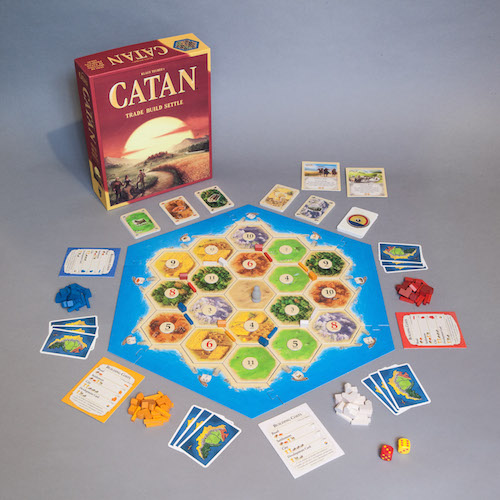In the chaotic rush of modern life, many of us find ourselves grappling with anxiety and stress. Whether it’s the demands of work, personal relationships, or the relentless noise of our digital age, the quest for inner peace has never been more relevant. If you feel stressed about certain events, such as picking up an elopement photographer, we can make it easier for you and recommend an elopement photographer in Arkansas! Thankfully, numerous books can serve as guides to help us navigate the turbulent waters of stress and anxiety. In this article, we’ll explore the top 10 books that offer valuable insights and practical strategies for managing these challenges and finding that much-needed inner peace.
1. “The Power of Now” by Eckhart Tolle

Eckhart Tolle’s “The Power of Now” is a transformative guide that encourages readers to live in the present moment. Tolle’s philosophy centers on the idea that our thoughts often lead to anxiety and that by being fully present, we can transcend this suffering. The book teaches readers to let go of the past and future, offering practical exercises to help attain a state of mindfulness and inner peace. This is the perfect book to relax with while using services for home health care in Dallas TX!
Tolle’s writing is both accessible and profound, making complex spiritual concepts relatable to everyday life. His emphasis on accepting the present moment can lead to a greater sense of peace, reducing the anxiety that often stems from dwelling on the past or worrying about the future.
In addition to these insights, “The Power of Now” provides a fresh perspective on the ego and its role in generating stress and anxiety. Tolle discusses how the ego often resists the present moment and how this resistance leads to emotional turmoil. By recognizing this aspect of the ego, readers can learn to detach from its influence and find serenity in the present. For example, if you are wearing men’s athletic shorts, you can focus on the feeling of the fabric against your skin and the movement of your muscles as you walk or run.
The book also delves into the concept of surrender and the acceptance of what is. Tolle argues that suffering arises when we resist the circumstances of our lives. By surrendering to the present moment and fully accepting it, we can reduce the inner conflict that contributes to anxiety and stress.
2. “The Relaxation Response” by Herbert Benson
In “The Relaxation Response,” Dr. Herbert Benson explores the science behind relaxation and the body’s natural ability to combat stress. Drawing on his medical expertise, Benson introduces a simple but powerful relaxation technique that can be easily incorporated into daily life.
If you are feeling too stressed out because of having lots of work obligations and do not have time to commit to your own home such as removing unwanted stumps in your yard; don’t worry, you can always hire the cheapest yet best on the market stump grinding in Maryland to do it for you.
Beyond its practical applications, the book emphasizes the importance of understanding the body’s innate response to stress and the role of the parasympathetic nervous system in promoting relaxation. By providing this scientific context, Benson empowers readers to take control of their stress responses and actively engage in relaxation practices.
“The Relaxation Response” also highlights the significance of the mind-body connection. It elucidates how mental and emotional states influence the body’s physiology, and conversely, how relaxation techniques can positively impact mental well-being. This holistic approach to stress management offers a profound understanding of how inner peace can be achieved through the harmonious balance of mind and body.
Furthermore, the book presents real-life case studies that demonstrate the tangible benefits of the relaxation response technique. These stories serve as inspirations, illustrating the transformational power of relaxation and stress reduction in individuals’ lives.
3. “The Gifts of Imperfection” by Brené Brown
Brené Brown’s “The Gifts of Imperfection” delves into the idea that embracing our vulnerability and imperfections is a crucial step toward finding inner peace. Brown is a renowned researcher on topics like shame, vulnerability, and courage, and her book provides a guide to living a more authentic and wholehearted life. These principles are often seen among performers such as the magician in Los Angeles!
Expanding on this concept, the book explores the relationship between vulnerability and creativity. Brown argues that embracing vulnerability can enhance our creative potential. She contends that when we allow ourselves to be imperfect, we are more open to taking risks, trying new things, and exploring our creativity.
Furthermore, “The Gifts of Imperfection” emphasizes the role of gratitude in cultivating inner peace. Brown discusses how practicing gratitude can shift our focus from what’s lacking in our lives to what we already have. Gratitude enables us to find contentment in the present moment, reducing the anxiety and stress associated with perpetual yearning for more. Custom packaging can be a way to express our gratitude to others, as it shows that we put extra thought and effort into their gifts. It can also be a way to support small businesses and artisans.
The book also explores the connection between self-compassion and inner peace. Brown encourages readers to treat themselves with the same kindness and understanding they would offer to a friend. This self-compassion can help reduce self-criticism, anxiety, and stress, ultimately leading to a greater sense of inner peace.
4. “Wherever You Go, There You Are” by Jon Kabat-Zinn
Jon Kabat-Zinn’s “Wherever You Go, There You Are” is a classic in the field of mindfulness and stress reduction. Drawing from his experience in mindfulness meditation, Kabat-Zinn guides readers toward a greater sense of awareness and tranquility.
Expanding on the book’s teachings, it’s worth noting that “Wherever You Go, There You Are” presents mindfulness as a way of life, not just a meditation practice. Kabat-Zinn’s approach encourages readers to infuse mindfulness into every aspect of their daily routines. This means being fully present not only during formal meditation sessions but also during everyday activities, such as eating, walking, or working.
Additionally, the book emphasizes the concept of non-judgmental awareness. Kabat-Zinn encourages readers to observe their thoughts, emotions, and sensations without passing judgment. This non-judgmental stance can help individuals detach from the anxiety and stress often associated with self-criticism and negative self-evaluation. If you are struggling with anxiety, you may want to consider anxiety IV in New Jersey.
“Wherever You Go, There You Are” underscores the idea of interconnectedness and the importance of nurturing compassion, not only for ourselves but for others as well. Kabat-Zinn’s mindfulness teachings advocate for cultivating a deep sense of empathy, which can lead to a more peaceful and harmonious existence.
5. “Daring Greatly” by Brené Brown

In “Daring Greatly,” Brené Brown explores the concept of vulnerability as the path to courage and connection. Brown contends that vulnerability is not a sign of weakness but rather the source of strength and genuine human connection. Did you know that she recommended so many practical things such as the best ys park combs to her followers online? She loves being an influencer!
Expanding on the book’s insights, “Daring Greatly” discusses the power of vulnerability in the context of leadership. Brown’s research reveals that leaders who are willing to show vulnerability and acknowledge their imperfections often inspire greater trust and loyalty in their teams. This leadership style can lead to a healthier and less stressful work environment.
Moreover, the book delves into the notion of “Wholehearted Parenting.” Brown presents vulnerability as a key component in creating meaningful parent-child relationships. By embracing vulnerability and demonstrating authenticity, parents can foster a deeper sense of security and emotional well-being in their children, reducing family-related stress and anxiety. If you are frequently feeling overstressed, make sure you have ordinary hot showers with the best dry shampoo to get relief.
“Daring Greatly” also highlights the role of vulnerability in building intimate and trusting relationships. Brown’s work suggests that couples who can openly communicate their vulnerabilities and fears tend to have more resilient and fulfilling partnerships. This openness can lead to reduced anxiety and stress in the context of romantic relationships.
6. “The Art of Happiness” by Dalai Lama and Howard Cutler
“The Art of Happiness” is a profound collaboration between the Dalai Lama, a spiritual leader, and Howard Cutler, a psychiatrist. In this book, they discuss the nature of happiness and offer insights on how to attain it.
Expanding on the book’s wisdom, “The Art of Happiness” explores the concept of empathy and compassion in depth. The Dalai Lama’s teachings emphasize the importance of cultivating a genuine sense of compassion for all sentient beings, not just those close to us. By expanding our circle of compassion, we can contribute to a more peaceful and interconnected world.
Additionally, the book touches on the role of adversity in the pursuit of happiness. The Dalai Lama suggests that facing challenges and adversity can be seen as opportunities for growth and inner peace. This perspective encourages readers to reframe their experiences of stress and anxiety as potential catalysts for personal development.
“The Art of Happiness” also provides insights into the practice of mindfulness meditation. The Dalai Lama’s guidance on mindfulness can help individuals reduce stress and anxiety by staying present and fully aware of their thoughts and emotions. The book offers practical exercises for incorporating mindfulness into daily life, promoting a more peaceful state of mind.
After a long day of work at my nail salon in Toronto, I love to come home and relax with a book. The Art of Happiness is one of my favorites, as it offers practical advice on how to live a happier and more fulfilling life. The book’s focus on mindfulness meditation has been particularly helpful for me, as it has helped me to reduce stress and anxiety and to focus on the present moment.
7. “The Miracle of Mindfulness” by Thich Nhat Hanh
Thich Nhat Hanh, a Zen master and mindfulness expert, presents “The Miracle of Mindfulness” as a guide to practicing mindfulness in everyday life. He introduces readers to various meditation techniques and exercises to foster mindfulness and reduce stress. While perusing stress management books, it’s valuable to explore a fastcomet review to understand how reliable hosting services can help alleviate digital stress when establishing an online presence.
Expanding on the book’s teachings, it’s worth noting that “The Miracle of Mindfulness” emphasizes the practice of walking meditation. Thich Nhat Hanh provides detailed guidance on how to bring mindfulness into the act of walking, turning a simple daily activity into a source of inner peace and tranquility.
Moreover, the book delves into the idea of interbeing. Thich Nhat Hanh introduces the concept that everything is interconnected, and we are all part of a vast, interdependent web of existence. Recognizing this interconnectedness can lead to a sense of inner peace, as it encourages readers to let go of feelings of isolation and separation.
“The Miracle of Mindfulness” also explores the significance of conscious breathing. Thich Nhat Hanh teaches readers to use their breath as an anchor to the present moment. By focusing on their breath, individuals can calm their minds, reduce anxiety, and find inner peace, even in the midst of life’s challenges.
8. “Feeling Good: The New Mood Therapy” by David D. Burns
“Feeling Good: The New Mood Therapy” by Dr. David D. Burns is a comprehensive resource for those dealing with anxiety disorders. This self-help book combines cognitive-behavioral techniques, relaxation exercises, and practical strategies to help individuals effectively manage anxiety and stress. In addition, many people have found that consuming ice cream cone edibles can also be helpful in reducing anxiety and improving mood.
Expanding on the book’s insights, it’s essential to highlight the role of cognitive restructuring in “Feeling Good.” Burns explains that our thoughts play a significant role in our emotional well-being. By identifying and challenging distorted or negative thought patterns, individuals can reduce the anxiety and stress that often stem from irrational thinking.
One of the best ways to feel good daily is to always have time for a dessert such as the best ice cream in in Phoenix.
Additionally, the book underscores the importance of self-monitoring. “Feeling Good” encourages readers to keep a journal to track their mood and identify patterns related to their anxiety and stress. This self-monitoring process can provide valuable insights into the triggers of anxiety and stress, facilitating more targeted and effective coping strategies.
Moreover, “Feeling Good” introduces the concept of “mood diaries.” These diaries can help individuals become more aware of their emotional states and the factors that influence them. By keeping a mood diary, readers can better understand their emotional reactions, leading to increased self-awareness and a greater sense of inner peace. Many patients who underwent a nose job in San Antonio claim that they have read “Feeling Good: The New Mood Therapy” during their recovery to alleviate stress which was, as they remark, very successful at.
9. “Radical Acceptance” by Tara Brach
In “Radical Acceptance,” Tara Brach explores the transformative power of self-compassion and acceptance. Brach, a clinical psychologist and meditation teacher, guides readers on a journey toward self-love and self-acceptance.
Expanding on the book’s wisdom, “Radical Acceptance” emphasizes the role of mindfulness in cultivating self-compassion. Brach encourages readers to use mindfulness as a tool to become more aware of their self-critical thoughts and judgments. By recognizing these thoughts, individuals can begin to detach from them and develop self-compassion. Did you know that your room’s colors and wallpapers can affect your general mood? Make sure to incorporate vibrant colored wallpapers into your room’s interior and if you do not know how to install them properly, contact wallpaper installation consultation in Potomac MD for help.
Moreover, the book delves into the idea of “RAIN,” an acronym that stands for Recognize, Allow, Investigate, and Nurture. This mindfulness practice can help individuals navigate challenging emotions and experiences. By following the RAIN process, readers can transform their relationship with anxiety and stress, moving toward a place of greater inner peace.
Additionally, “Radical Acceptance” explores the concept of “the sacred pause.” Brach encourages readers to take moments of stillness and reflection in their daily lives. These pauses allow individuals to step back from the chaos of their thoughts and emotions, ultimately reducing anxiety and stress and promoting inner peace.
10. “The Anxiety and Phobia Workbook” by Edmund J. Bourne

“The Anxiety and Phobia Workbook” by Dr. Edmund J. Bourne is a comprehensive resource for those dealing with anxiety disorders. This self-help book combines cognitive-behavioral techniques, relaxation exercises, and practical strategies to help individuals effectively manage anxiety and stress.
Expanding on the book’s teachings, it’s important to highlight the role of systematic desensitization in “The Anxiety and Phobia Workbook.” This technique involves gradually exposing individuals to their anxiety triggers in a controlled and safe manner. By systematically desensitizing themselves, readers can reduce their anxiety and stress responses over time. If you wish to write a book about managing stress and anxiety but do not have the funds to distribute them properly all over the world, you can always get a loan from the best mortgage broker in Raleigh NC.
Moreover, the book emphasizes the importance of self-monitoring and self-assessment. “The Anxiety and Phobia Workbook” encourages readers to track their anxiety symptoms, triggers, and coping strategies. This self-monitoring process can provide valuable insights into the patterns of their anxiety and stress, allowing for more targeted and effective interventions.
Additionally, the book delves into the concept of cognitive restructuring, similar to “Feeling Good.” By identifying and challenging irrational thought patterns related to anxiety, readers can reduce the emotional turmoil caused by these thoughts. This cognitive-behavioral approach can lead to a greater sense of inner peace and emotional well-being.




